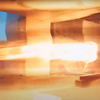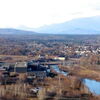
Processing Your Payment
Please do not leave this page until complete. This can take a few moments.
- News
-
Editions
-
- Lists
-
Viewpoints
-
Our Events
-
Event Info
- Business Leaders of the Year Reception 2025
- Women's Leadership Forum 2025
- On the Road with Mainebiz in Bethel
- Health Care Forum 2025
- On The Road with Mainebiz in Greenville
- On The Road with Mainebiz in Waterville
- Small Business Forum 2025
- Outstanding Women in Business Reception 2025
- On The Road with Mainebiz in Bath
- 60 Ideas in 60 Minutes Portland 2025
- 40 Under 40 Awards Reception 2025
- On The Road with Mainebiz in Lewiston / Auburn
- 60 Ideas in 60 Minutes Bangor 2025
Award Honorees
- 2025 Business Leaders of the Year
- 2024 Women to Watch Honorees
- 2024 Business Leaders of the Year
- 2023 NextUp: 40 Under 40 Honorees
- 2023 Women to Watch Honorees
- 2023 Business Leaders of the Year
- 2022 NextUp: 40 Under 40 Honorees
- 2022 Women to Watch Honorees
- 2022 Business Leaders of the Year
-
-
Calendar
-
Biz Marketplace
- News
- Editions
- Lists
- Viewpoints
-
Our Events
Event Info
- View all Events
- Business Leaders of the Year Reception 2025
- Women's Leadership Forum 2025
- On the Road with Mainebiz in Bethel
- Health Care Forum 2025
- On The Road with Mainebiz in Greenville
- + More
- On The Road with Mainebiz in Waterville
- Small Business Forum 2025
- Outstanding Women in Business Reception 2025
- On The Road with Mainebiz in Bath
- 60 Ideas in 60 Minutes Portland 2025
- 40 Under 40 Awards Reception 2025
- On The Road with Mainebiz in Lewiston / Auburn
- 60 Ideas in 60 Minutes Bangor 2025
- - Less
Award Honorees
- 2025 Business Leaders of the Year
- 2024 Women to Watch Honorees
- 2024 Business Leaders of the Year
- 2023 NextUp: 40 Under 40 Honorees
- 2023 Women to Watch Honorees
- 2023 Business Leaders of the Year
- + More
- 2022 NextUp: 40 Under 40 Honorees
- 2022 Women to Watch Honorees
- 2022 Business Leaders of the Year
- Nomination Forms
- Calendar
- Biz Marketplace
Maine Food Insider: B&M beanery celebrates 150th anniversary
 Photo / Lori Valigra
Plant worker Chris Wilcox empties 900-pound iron pots filled with baked beans and sauce into a chute, where the beans slide downstairs to be canned and weighed and the sauce is separated to be added before the cans are sealed.
Photo / Lori Valigra
Plant worker Chris Wilcox empties 900-pound iron pots filled with baked beans and sauce into a chute, where the beans slide downstairs to be canned and weighed and the sauce is separated to be added before the cans are sealed.
Started just a couple years after the Civil War ended, the Burnham & Morrill Co., opened a canned meats, vegetables and fish plant on Franklin Street in Portland. Today, 150 years after the B&M plant opened, it produces 15.5 million cans of baked beans annually in a 225,000-square-foot, five-floor factory it’s been in since 1913, just off Interstate 295 in Portland’s Back Cove neighborhood.
It also makes other food brands owned by parent B&G Foods Inc. (NYSE: BGS) of Parsippany-Troy Hills, N.J.: Ortega refried beans, Underwood meat spreads, and Accent and Sazon seasonings. B&M was bought by B&G in 1999. But the B&M beans, and its iconic headquarters with a tall brick stack that now touts its anniversary date, are where it makes its mark on Portland.
B&M baked beans find themselves onto the shelves of major grocers and as donations to food banks and the multitude of baked bean suppers at Maine’s churches.
The company would not comment on revenue. After St. Lawrence & Atlantic Railroad stopped service on to the factory in 2014, because B&M was the lone customer, the company is now trucking its beans to market, increasing shipping costs, said production supervisor David Rickett.
During a recent tour honoring its year-long anniversary celebration, Rickett showed Mainebiz the operations, starting on the top floor. Rickett will celebrate his own anniversary at the B&M plant this January, when he marks 45 years working there. He is among the 90 full-time workers, the bulk of whom are in a union.

A series of 2,000-pound totes of beans — sourced from the Midwest and Canada — first are put into a vat of hot water and stirred to let out gasses. On the fifth floor the beans and water are pumped rapidly through what looks like a fish ladder to remove any debris or stones.
One floor down, they are then blanched for seven minutes, which adds moisture, Rickett said. The beans go into 200-pound iron bean pots mounted on a ceiling rail system, and are baked in brick ovens in sauce containing mustard, ground pork, molasses and other ingredients. Rickett said that’s the difference between B&M and Bush’s baked beans, which are blanched and slow cooked, but not baked. The pots, which weigh 900 pounds with the beans and sauce in them, are then dumped into a chute, where the beans slide down to the third floor and the sauce is drained into a trough.
On the third floor the beans are placed into cans and weighed, and then reunited with the sauce before the cans are sealed on the canning line, labeled and date-stamped. The beans are packed into boxes of a dozen on the second floor, and then stored in the warehouse on the first floor.
Pointing to the warehouse stacked floor to ceiling with products — mostly pallets of 18- and 28-ounce beans — Rickett said those items were made the day before.
“But, beans will last several years,” he added.










Comments